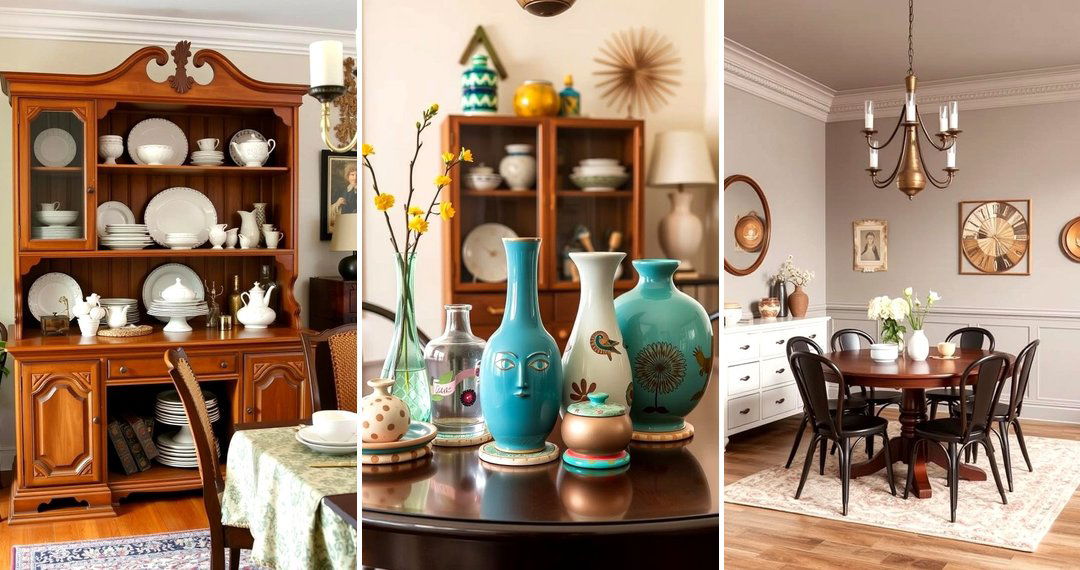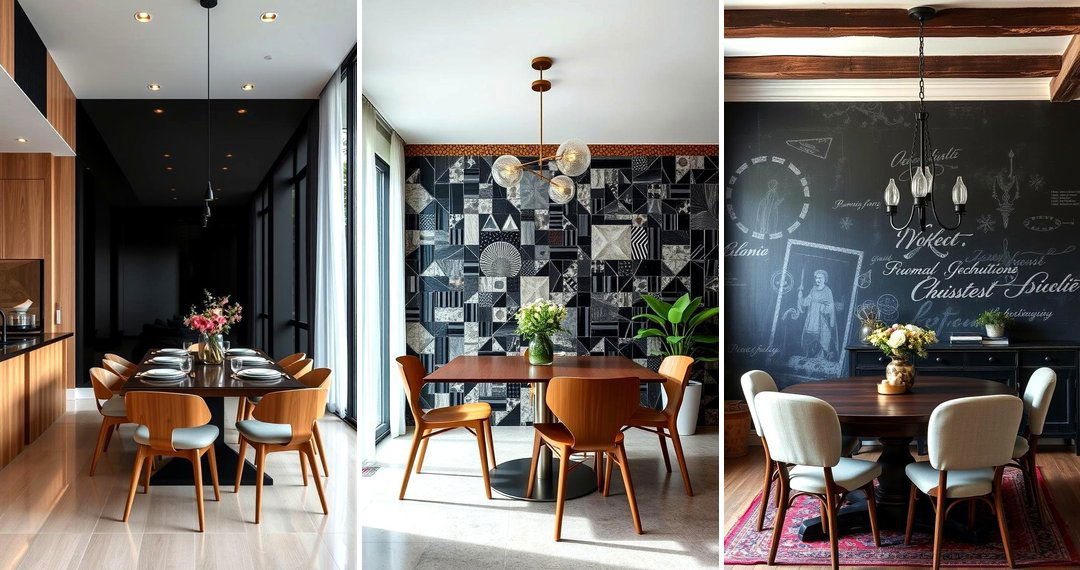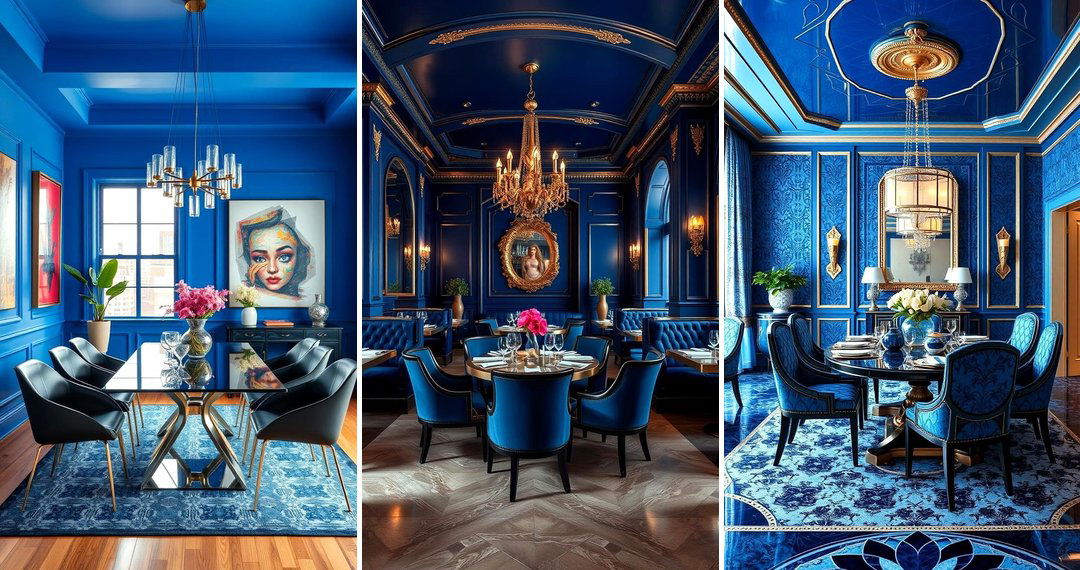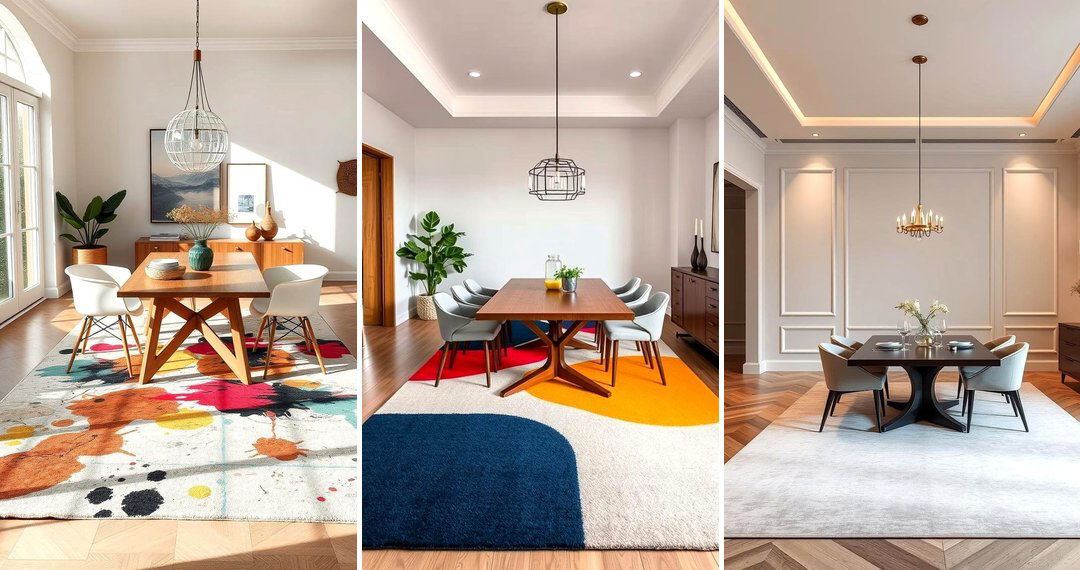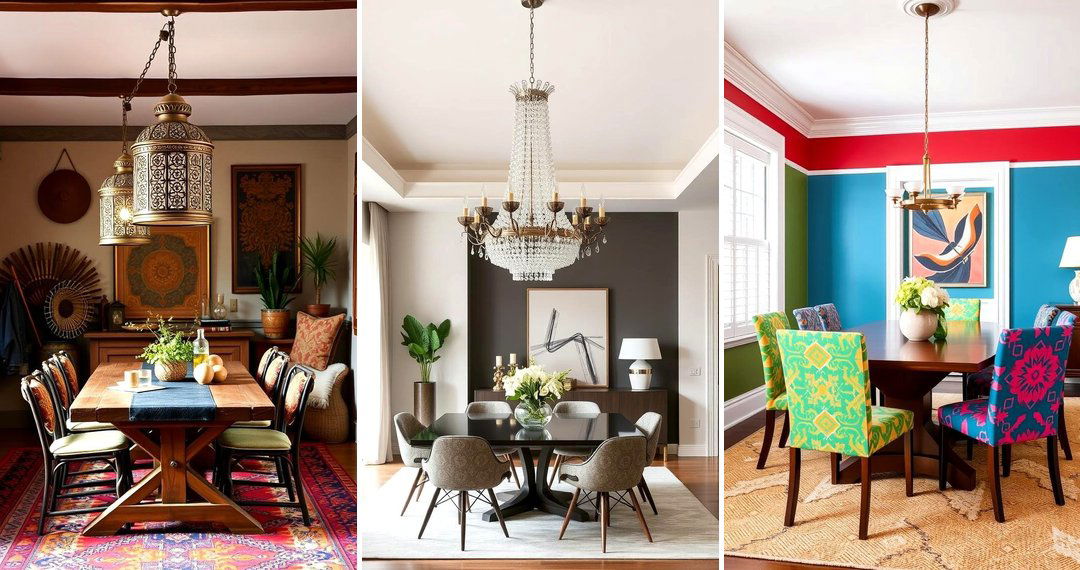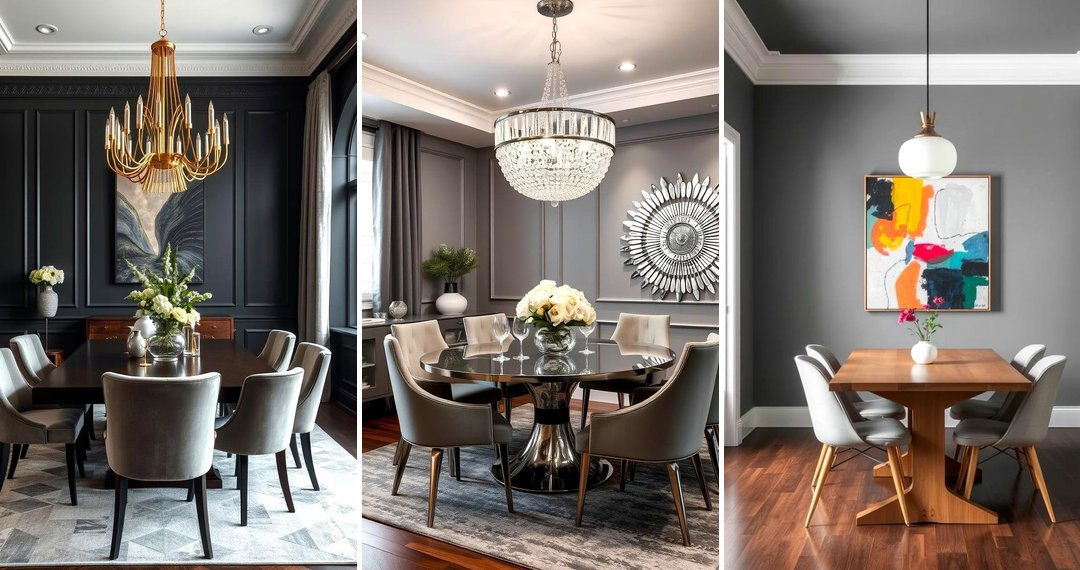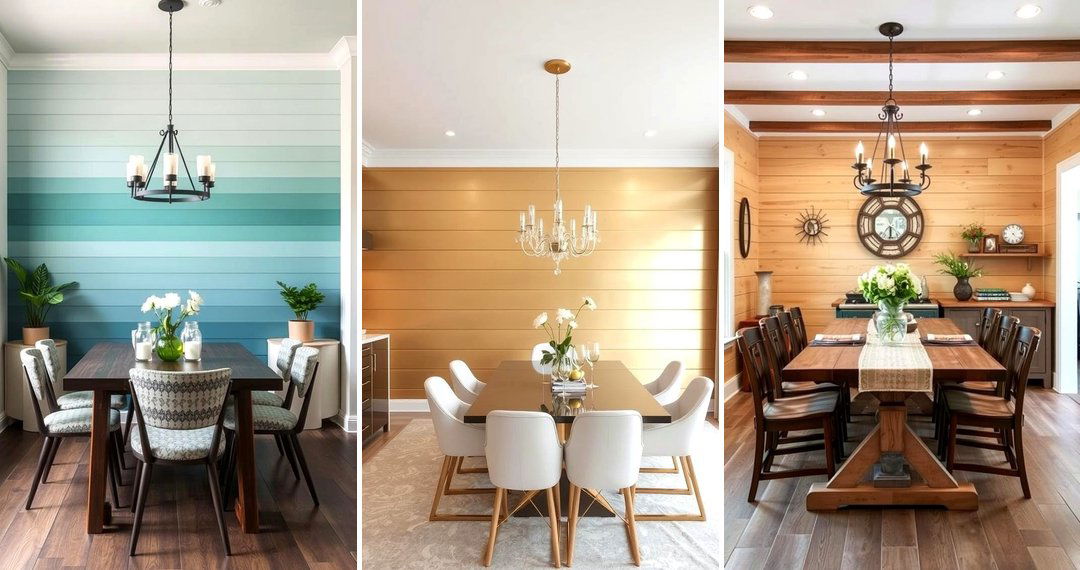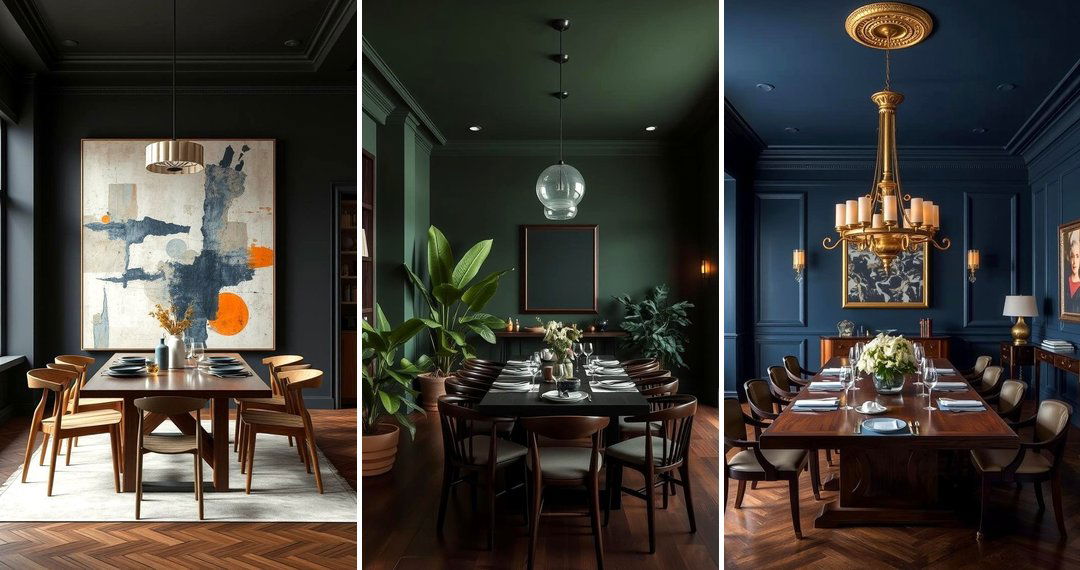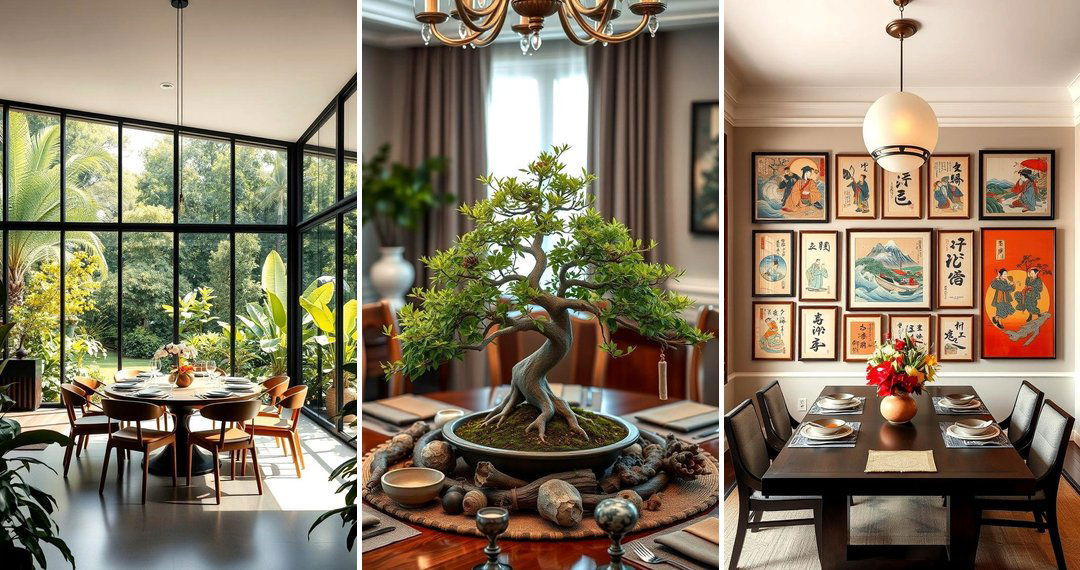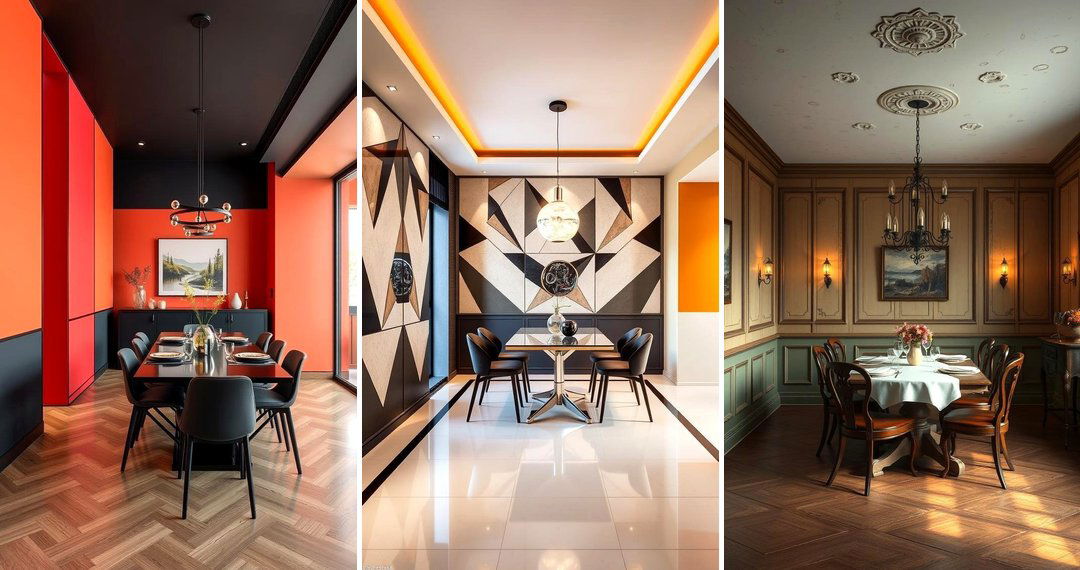The 1970s were a transformative decade in interior design, reflecting a unique blend of bold colors, geometric patterns, and natural elements. If you're looking to infuse your dining room with a nostalgic yet timeless charm, exploring 70s dining room design ideas can offer you a fresh perspective on vintage style. From earthy tones to eclectic furniture arrangements, these design trends were ahead of their time and continue to inspire. Whether you're creating a retro-inspired space or simply adding a touch of vintage flair, the 70s era brings a distinctive aesthetic that's both vibrant and warm. Explore the following ideas to transform your dining space into a haven of retro nostalgia with modern functionality.

1. Earthy Color Palettes for Warmth and Comfort
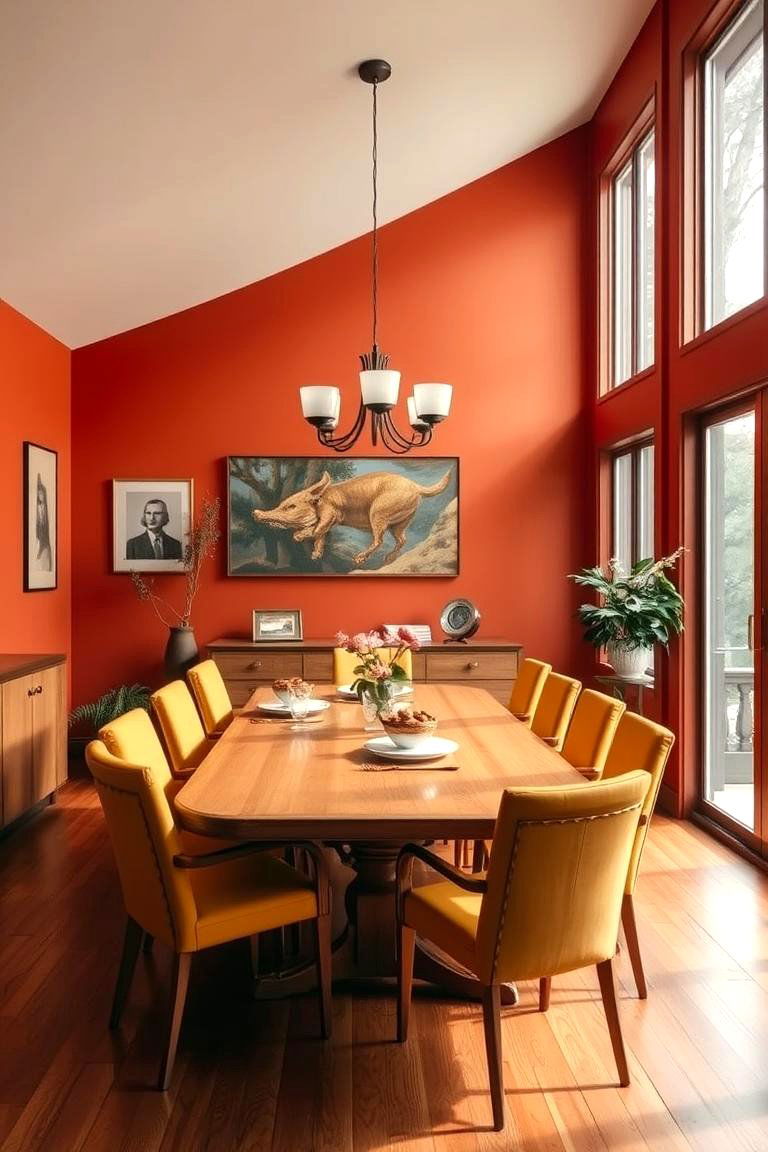
The 70s dining rooms were defined by earthy tones such as burnt orange, mustard yellow, and avocado green. These warm colors not only added a cozy and inviting feel to any space but also created an atmosphere of relaxation. Using earthy tones for walls, chairs, or even tablecloths can make a dramatic yet comforting statement in your dining area. You can complement these hues with natural wood furniture and earthy accessories to further enhance the retro vibe.
2. Bold Geometric Patterns on Walls

To make a statement in your dining room, consider adding geometric patterns to your walls. Inspired by the 70s, these bold designs bring personality and dimension to the room. Large, graphic prints, chevron patterns, or concentric circles can all be used to capture the essence of this era. Such patterns not only evoke a sense of nostalgia but also create an engaging focal point that will draw attention to your dining area.
3. Statement Lighting Fixtures
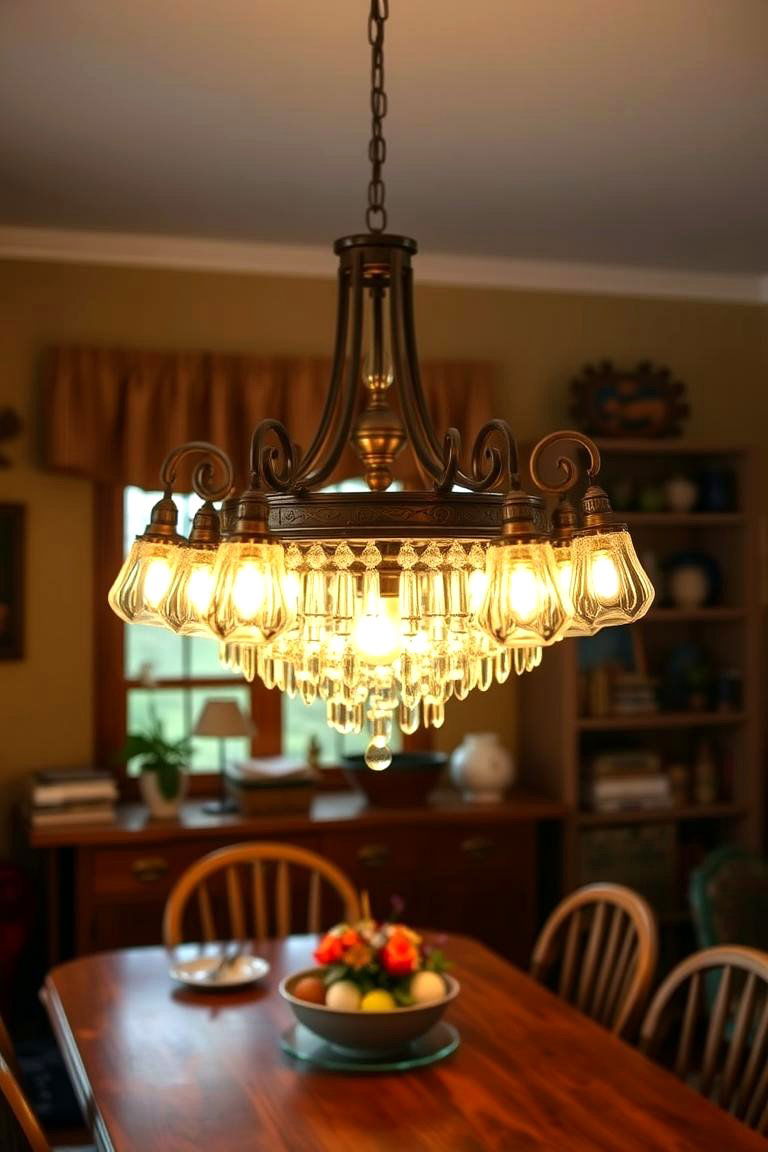
One hallmark of 70s design was the use of dramatic lighting to create ambiance and draw attention. Pendant lights with bold, spherical shapes or glass chandeliers with chrome finishes are perfect for recreating the vibe. These lighting fixtures are not just functional but act as pieces of art that elevate your dining room's decor. A well-placed statement light can add personality and highlight the room’s best features.
4. Natural Materials for Authenticity

70s design was all about bringing the outdoors inside, and natural materials played a crucial role in this movement. Incorporating wooden tables, wicker chairs, and stone accents into your dining room will give it an organic feel. This approach not only enhances the aesthetic but also creates a space that feels grounded and connected to nature. Adding greenery with potted plants further complements this look, giving your dining room a fresh, earthy atmosphere.
5. Retro Furniture with Clean Lines

Furniture in the 70s typically featured clean lines with an emphasis on function and form. To embrace this minimalist approach, look for dining tables and chairs with sleek profiles and angular shapes. Wood and metal materials were popular, and you can find many pieces today that channel this retro vibe. This type of furniture is perfect for modern dining rooms, offering a clean and organized appearance while adding a dash of vintage flair.
6. Incorporating Velvet for Luxurious Texture

Velvet became a staple in 70s interior design, and its luxurious texture is still relevant today. Opt for velvet dining chairs in bold colors like deep burgundy or rich teal to bring a touch of opulence to your dining area. This fabric provides both comfort and sophistication, giving your dining room a timeless, elegant look that pairs perfectly with wooden tables and natural materials.
7. Open Shelving with Retro Dinnerware
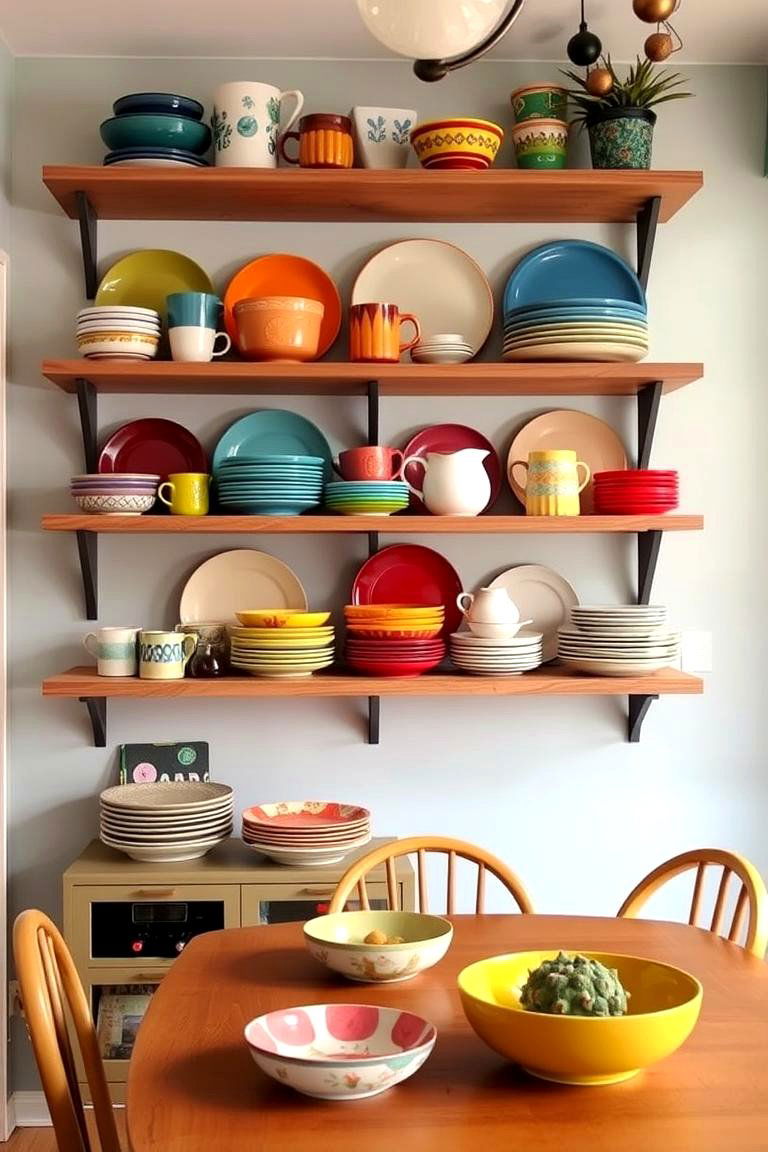
A fun and practical way to add personality to your 70s-inspired dining room is by displaying vintage dinnerware on open shelving. Think about stacking colorful ceramic plates, groovy mugs, or patterned bowls on floating shelves. This approach not only highlights the era's distinct style but also offers an opportunity to showcase your collection of retro kitchenware in an inviting and visually appealing manner.
8. Incorporating Macramé Accents

Macramé was a major trend in the 70s, and it can still add a bohemian touch to your dining space today. Hang macramé plant hangers or wall art to add texture and interest to your walls. The intricate knots and patterns bring a sense of craftsmanship to the room, while also introducing a fun and laid-back vibe that enhances the overall ambiance of your dining area.
9. Retro Bar Carts for Entertaining

A 70s dining room wouldn't be complete without a stylish bar cart. These vintage-inspired carts were the perfect addition for entertaining guests in style. Choose a sleek, chrome or wooden bar cart, and fill it with glassware, cocktail shakers, and vintage liquor bottles for a functional yet aesthetically pleasing piece. This design idea not only adds charm but also enhances the entertaining aspect of your dining space.
10. Layered Rugs for Texture and Warmth
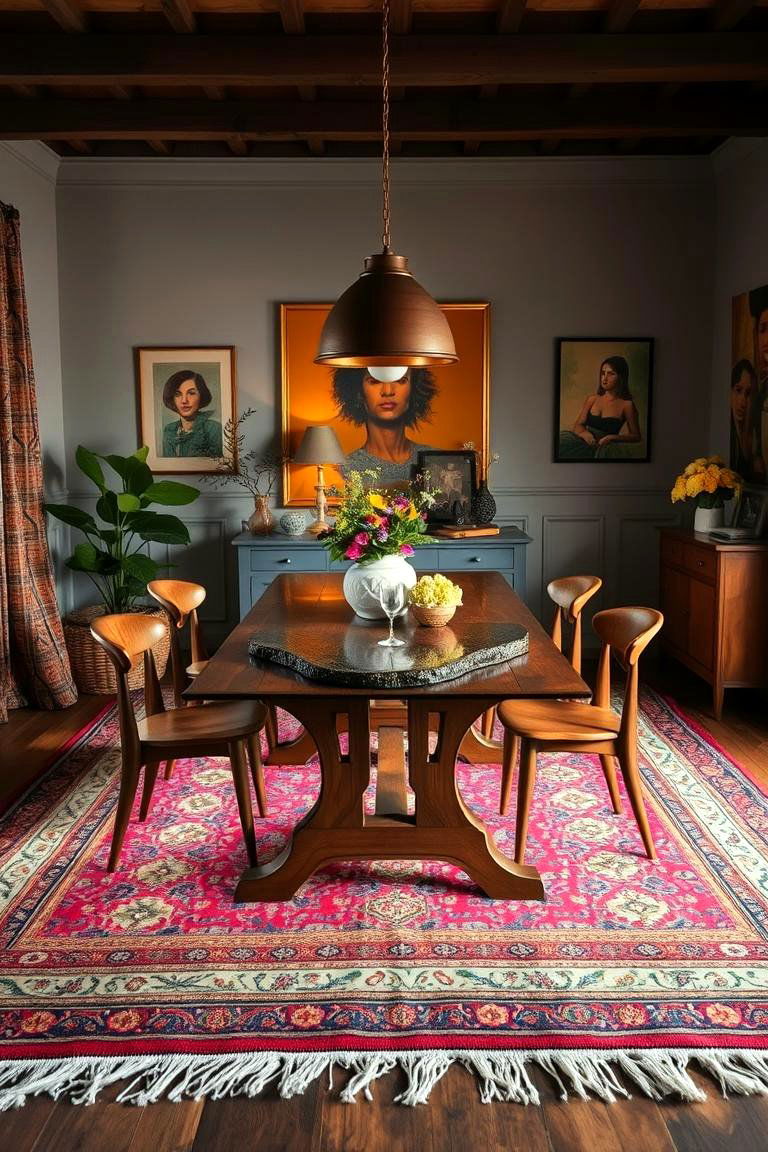
Layering rugs was a popular method in 70s design to add texture and warmth to the floor. Consider placing a bold, patterned rug underneath your dining table, and layer it with smaller, complementary rugs to enhance the depth of the room. The varied textures and colors will create a cozy atmosphere, while also allowing you to mix different patterns that reflect the playful side of 70s design.
11. Wall-Mounted Storage for Efficient Use of Space
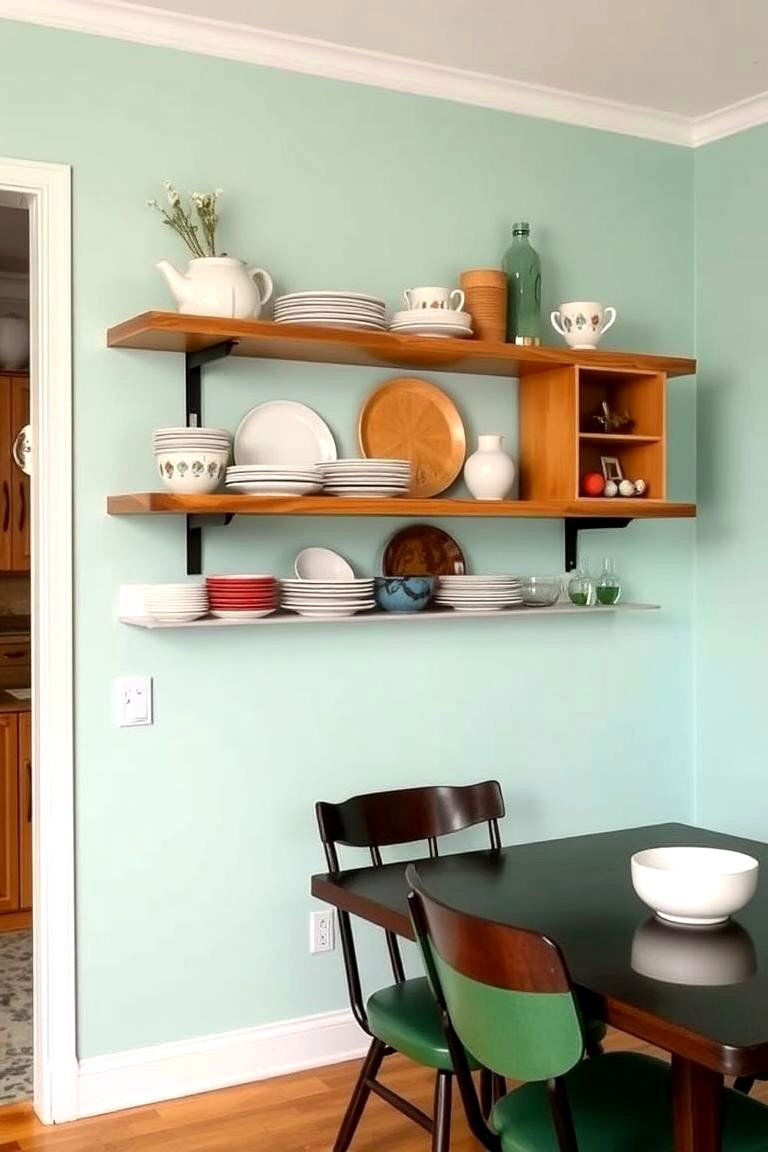
In smaller dining areas, wall-mounted storage units can be a game-changer. Floating shelves or cabinets in retro styles help maximize space while keeping your dining room organized and clutter-free. These pieces often incorporate metal, wood, or laminate finishes, blending retro aesthetics with functionality. Adding such storage will help keep your dining room neat and tidy without sacrificing style.
12. Faux Animal Hides for a Touch of Luxury
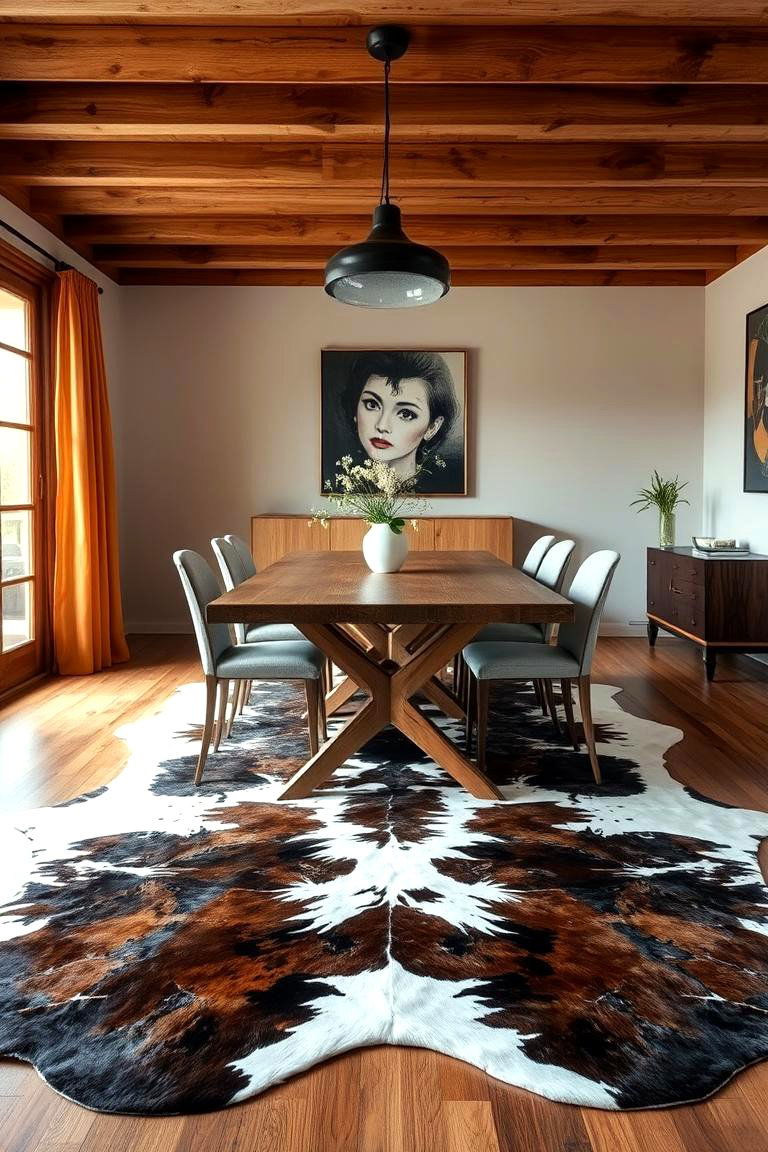
Incorporating faux animal hides was a prominent feature of 70s interior design. These rugs or throw blankets offer a luxurious texture and a bold contrast against wood and stone elements. By adding a faux hide to your dining room, you introduce a tactile element that enhances both the visual and sensory appeal of the space, all while maintaining the era's signature eclectic charm.
13. Retro-Inspired Wallpaper
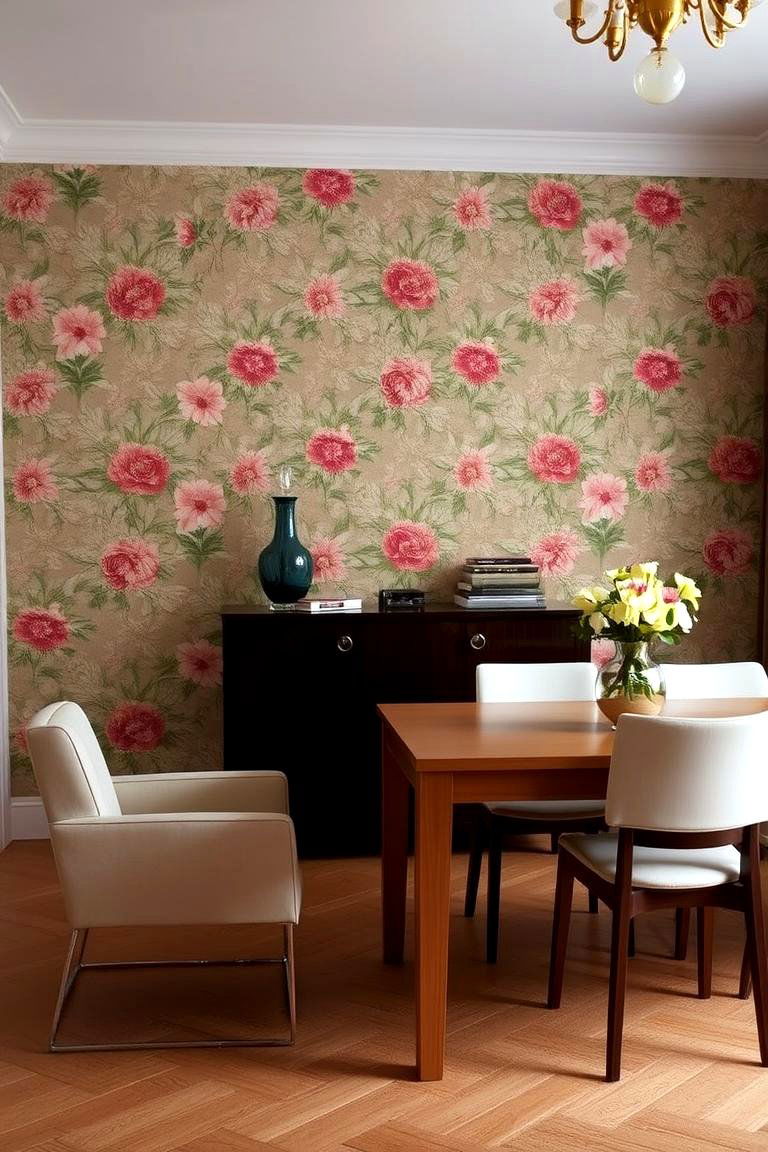
Wallpaper played a crucial role in the design trends of the 70s, with bold patterns and rich colors defining many dining rooms. Look for wallpaper with funky floral patterns, large-scale motifs, or stripes that create a sense of movement and energy. By adding wallpaper to one wall or as an accent, you can inject a dose of retro flair into your space without overwhelming the room.
14. Curved Furniture Pieces for Soft Lines
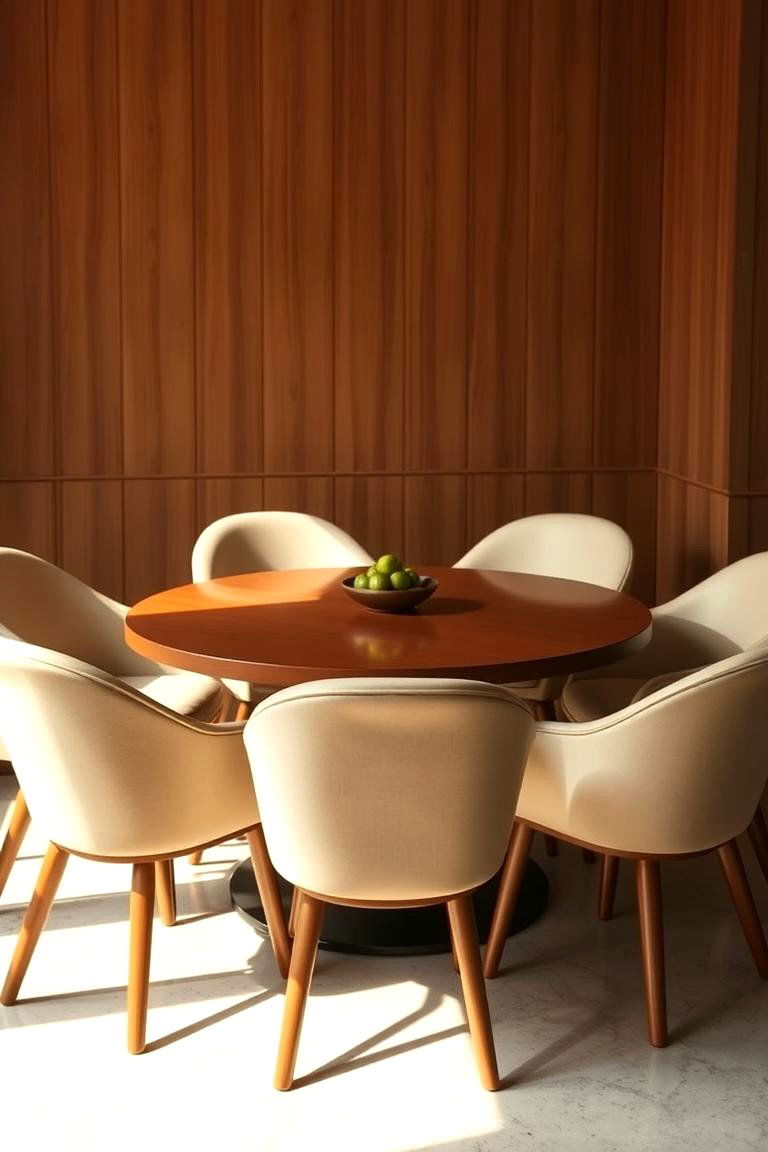
Curved furniture was a signature feature of 70s dining rooms, offering a softer, more inviting look. Consider choosing a rounded dining table or chairs with gentle, flowing lines. Curved furniture pieces create an atmosphere of warmth and intimacy, making them perfect for family gatherings and dinner parties. This design element also adds a more dynamic and visually pleasing shape to your dining area.
15. Large Mirrors to Create the Illusion of Space
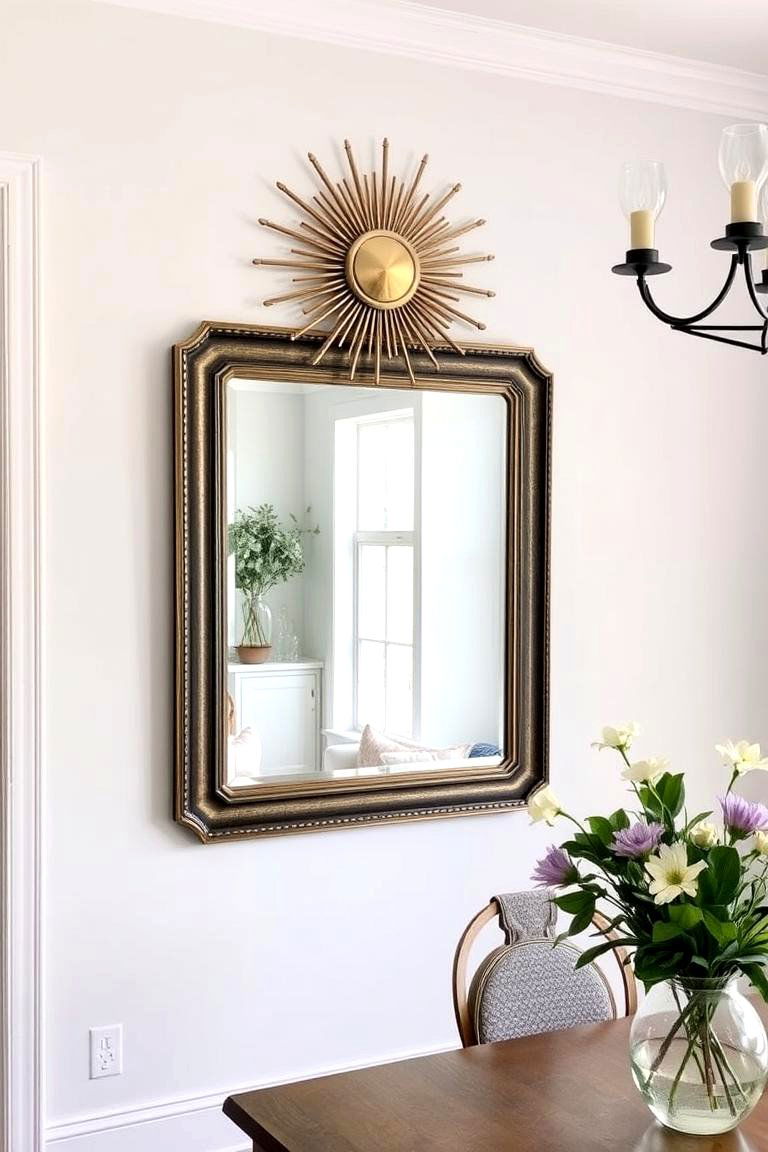
Large mirrors were often used in 70s dining rooms to reflect light and create the illusion of a bigger space. Adding a statement mirror to your dining room can make it feel larger and brighter, while also enhancing the decor. Look for mirrors with retro frames, such as sunburst designs or metal accents, to tie in with the overall aesthetic of the room.
16. Mixing Vintage and Modern Elements
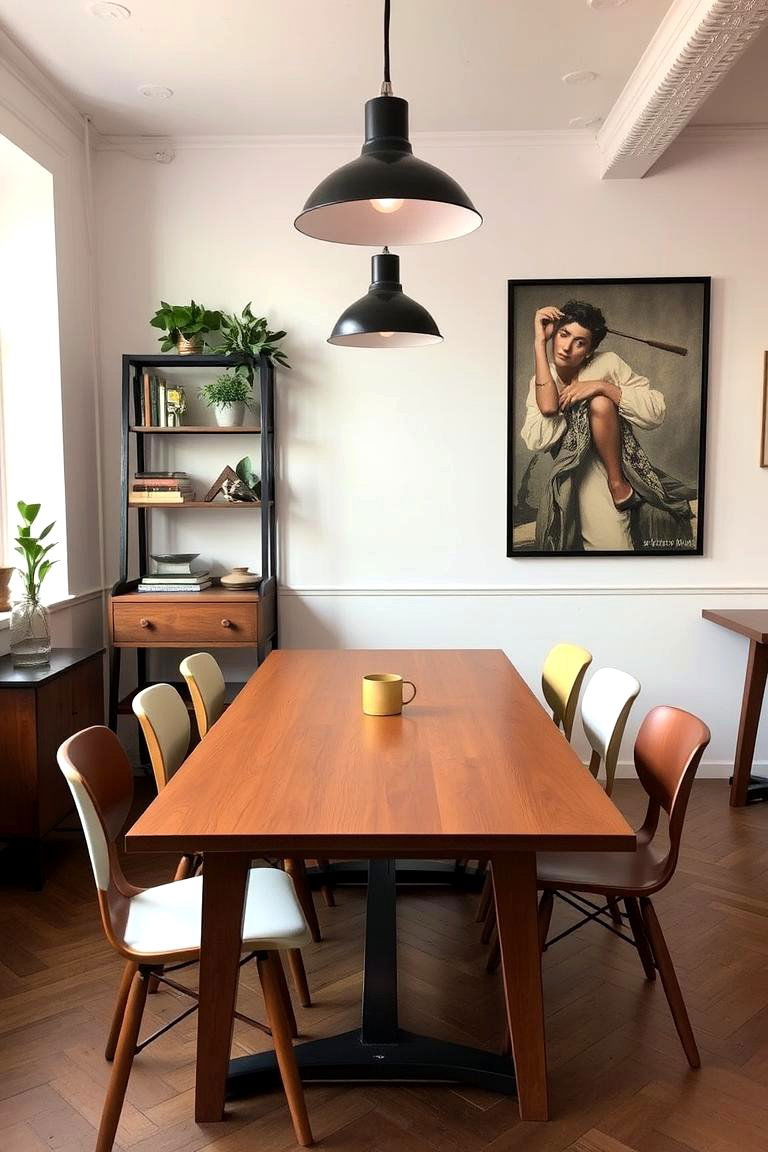
To achieve a balanced, updated 70s look, try blending vintage and modern design elements. For example, pair a classic 70s-style dining table with contemporary chairs, or mix retro lighting fixtures with modern wall art. This fusion creates a harmonious balance between old and new, allowing you to enjoy the charm of 70s design without compromising on modern functionality.
17. Textured Walls with Wood Paneling

Wood paneling was a major feature of 70s dining rooms, adding texture and warmth to the space. For a more modern twist, opt for a feature wall of wood paneling in rich tones such as walnut or mahogany. This not only adds depth to the room but also provides a natural and timeless aesthetic that complements a variety of other design elements.
18. Incorporating Bold Prints in Fabrics

To fully embrace the boldness of 70s style, consider using fabrics with large floral or abstract prints. Think about covering dining chairs or cushions with fabric that incorporates these striking patterns, creating visual interest and energy. These prints can be mixed with solid colors to balance the look and avoid overwhelming the space.
19. Combining Dark and Light Wood Tones
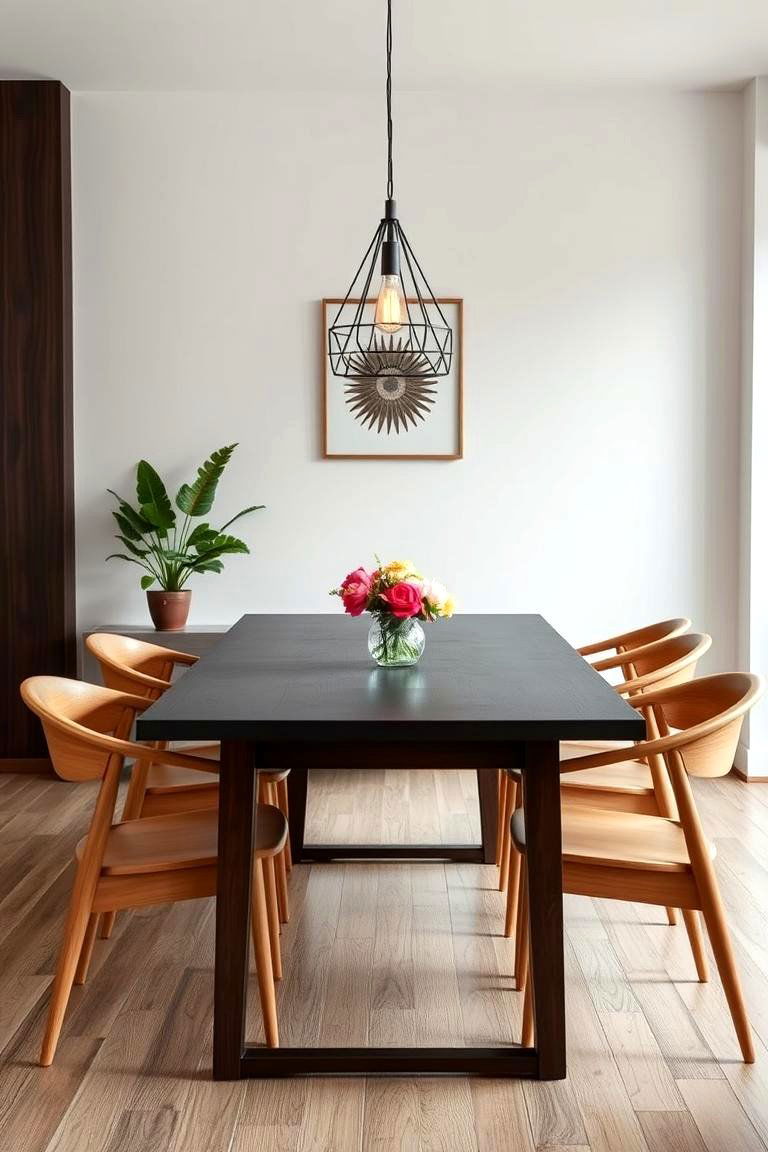
The 70s era often paired dark wood furniture with lighter accents, creating a visually appealing contrast. Incorporating both dark and light wood tones into your dining room can create a balanced and harmonious atmosphere. A dark wood dining table, paired with lighter wooden chairs or a wooden buffet, creates a timeless and elegant look that pays homage to this design era.
20. Using Brass and Gold Accents
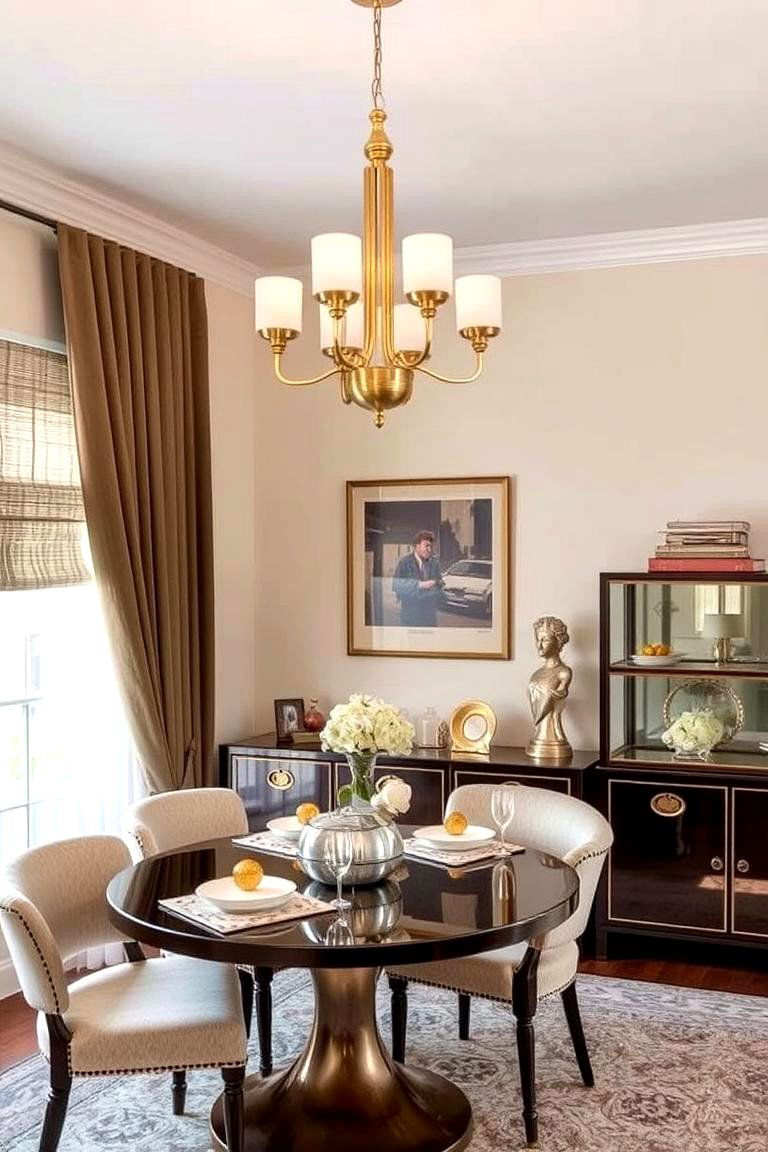
The use of brass and gold accents became a hallmark of 70s interior design, bringing warmth and elegance to any room. You can introduce these metallic elements into your dining space through light fixtures, handles, or even decorative pieces. A brass chandelier or gold-framed mirror will provide a touch of luxury and sophistication, elevating your retro dining room's style.
21. Incorporating a Round Dining Table
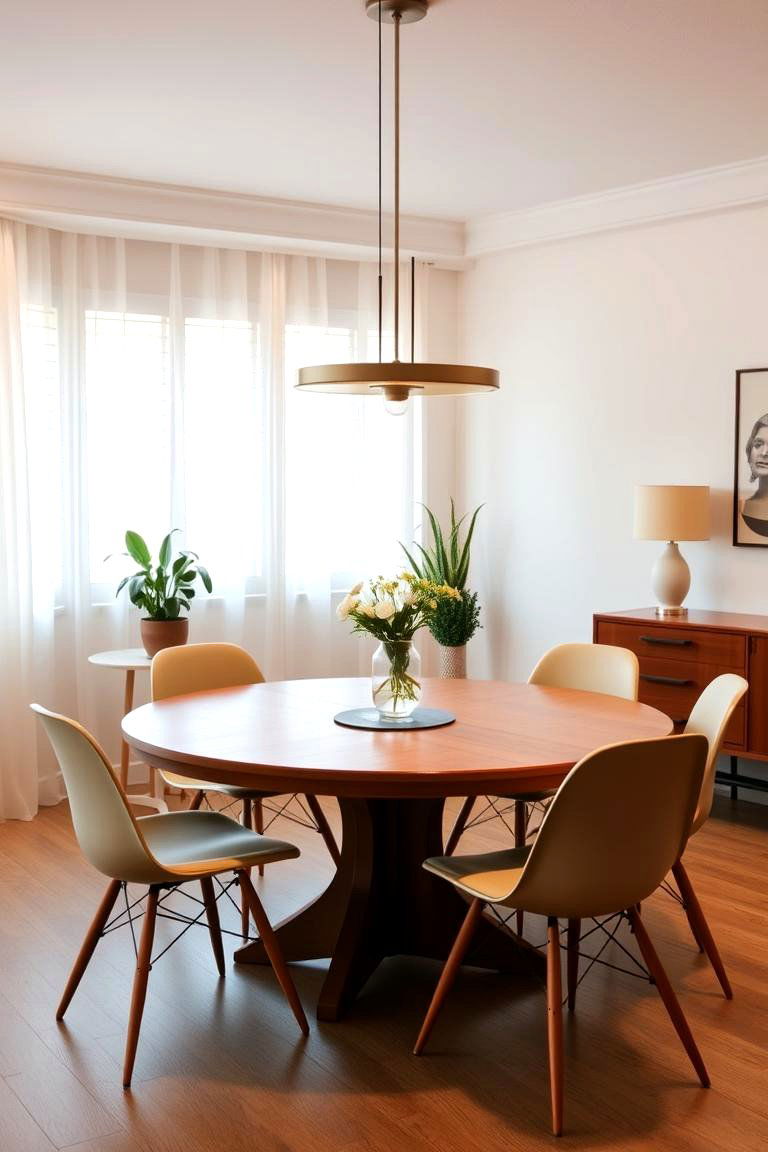
A round dining table is an iconic piece in 70s design, promoting conversation and a sense of unity. Its soft edges and symmetrical design make it perfect for family dinners or social gatherings. Pair a round table with modern dining chairs, or opt for a retro-inspired design with wood accents for that authentic 70s look.
22. The Use of Bold Draperies
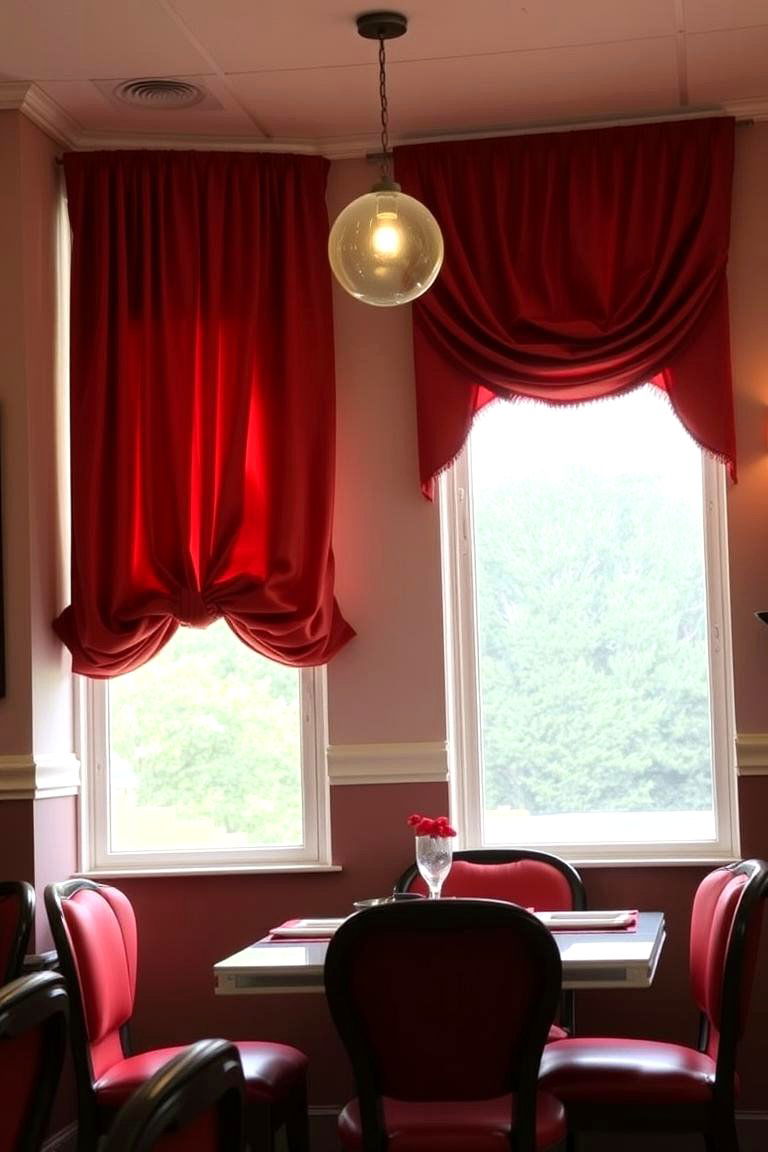
Heavy, bold drapes were a staple of 70s design, offering both functionality and style. Opt for long curtains in deep, rich colors or funky prints that match your room's aesthetic. These curtains not only block out sunlight but also add drama and texture to your dining area, framing the space and creating a cozy atmosphere.
23. Adding a Touch of Art Deco
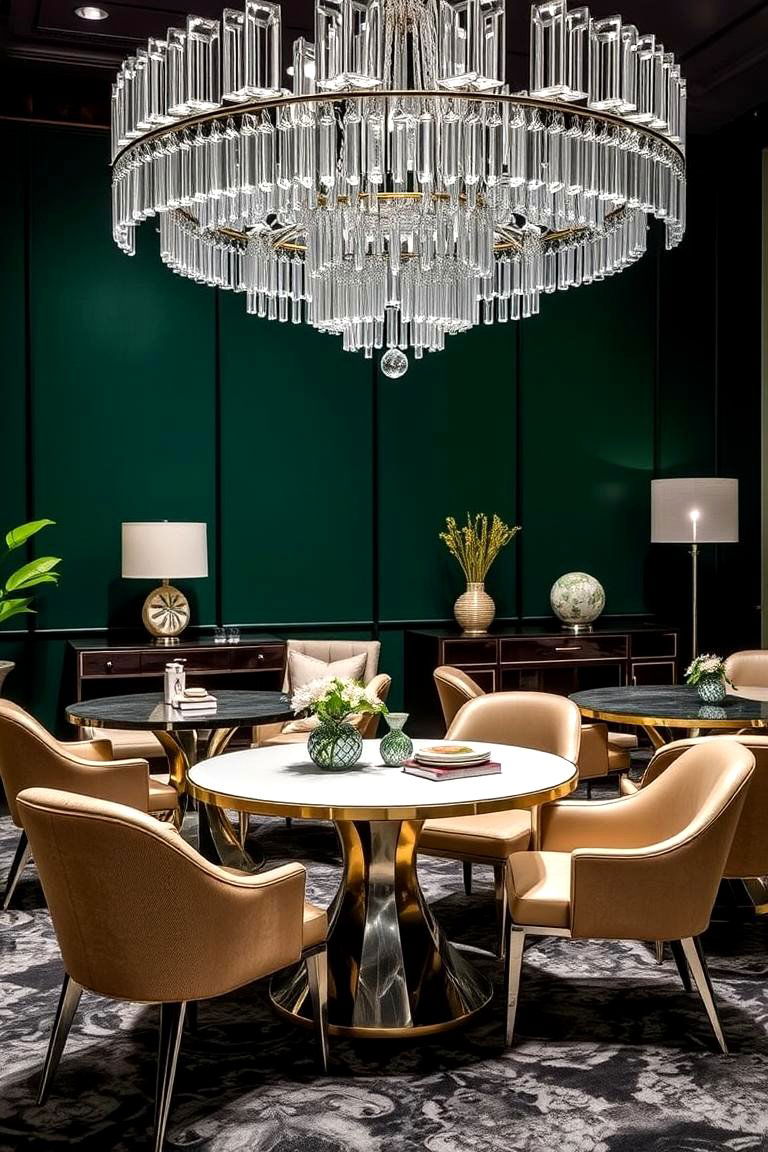
Art Deco elements made a resurgence in the 70s, offering a glamorous and sophisticated touch. Incorporate Art Deco-inspired furniture pieces, such as sleek tables or geometric chairs, to bring a sense of luxury to your dining room. Pair these with opulent accessories like gold-framed mirrors or crystal chandeliers for a truly dazzling effect.
24. Mixing Different Chair Styles
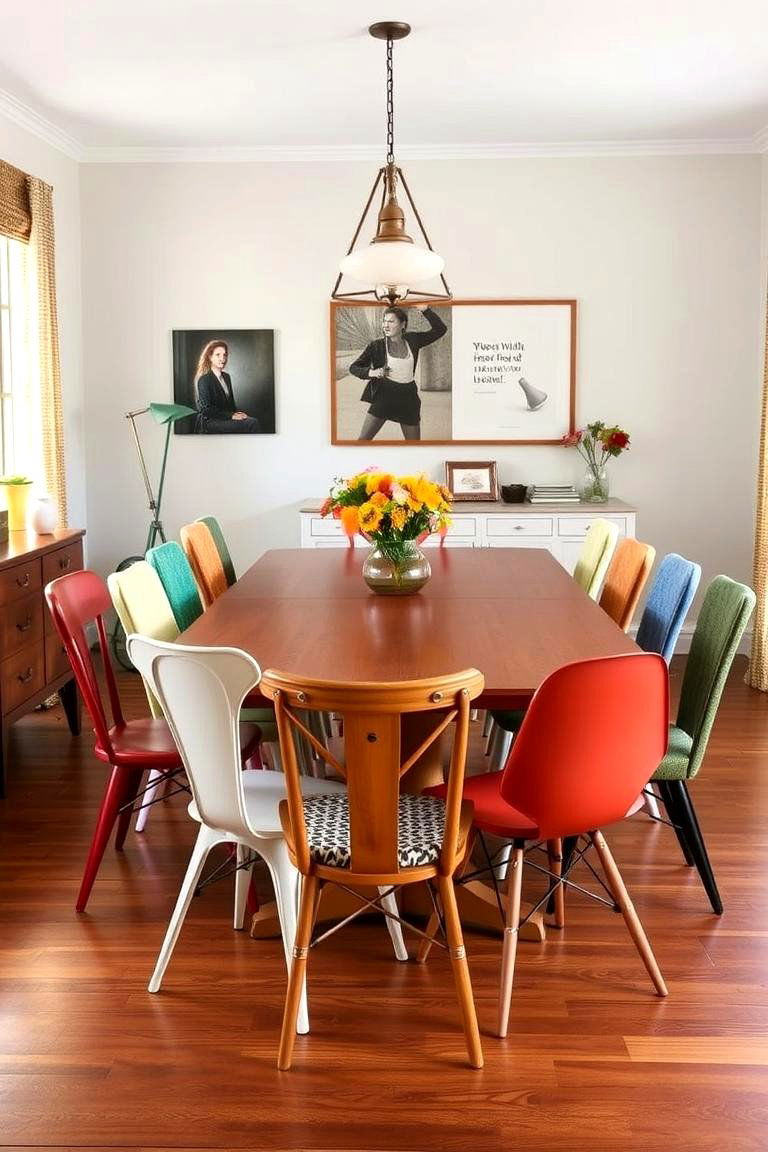
One of the unique design elements of the 70s was the eclectic mixing of chair styles. Experiment by combining different types of dining chairs, such as upholstered and wooden, or even mixing various shapes and colors. This creates a lively, dynamic feel in your dining room, reflecting the free-spirited style of the 70s.
Conclusion:
The 70s dining room style offers a rich and versatile palette of design elements that can be customized to suit any space. Whether you're drawn to the earthy tones, geometric patterns, or eclectic furniture, there are countless ways to integrate retro flair into your modern home. By thoughtfully selecting key elements, such as textured walls, bold prints, and luxurious materials, you can create a dining room that is both stylish and functional. Embrace the boldness and warmth of the 70s to transform your space into an inviting, timeless haven.


